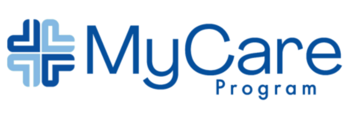Brief Overview: Erectile Dysfunction is the consistent inability to attain and/or maintain an erection sufficient for desired sexual activity. It encompasses multiple underlying diseases that affect nerves, arteries, skin, or smooth muscle function.
Prevalence: Increases with age and medical comorbidities.
Prevalence by age:- <40: 1-9%
- 40-59: 20-30%
- 60-69: 20-40%
- >70: 50-75%
Etiology: Many medical comorbidities can lead to ED. It can be vasculogenic (atherosclerosis leads to decreased arterial inflow), neurogenic (Dementia, Parkinson, injury to CNS, spinal cord or peripheral nervous system), anatomic, endocrine (thyroid, adrenal, prolactinemias), and psychogenic (most common in young men-lack of interest, performance anxiety, mood disorder, stress).
How does an erection happen? Mechanism of erection includes relaxation of cavernosal smooth muscle, pelvic nerves release nitric oxide which causes smooth muscle relaxation, increased penile blood flow and tumescence. Veno-occlusive mechanism prevents blood outflow from penis which maintains erection.
Risk Factors: Probability increases with each risk factor.
- DM-3X risk in diabetic men. Occurs earlier and increases with duration.
- CVD- hyperlipidemia, hypertension, peripheral vascular disease
- BPH / LUTS
- Chronic liver/renal failure
- Prior abdominal/pelvic/penile surgery, radiation, trauma
- Priapism/peyronie disease
- Neurologic conditions such as Parkinson's, dementia, prior strokes
- Depression/psychological disorders
- Smoking
- Medications
- Antihypertensives-particularly thiazides, beta blockers, alpha2 agonists(clonidine). Better options include ACE, ARB, CCB.
- Psychotropics-MAO, SSRI, lithium. Better options include bupropion, mirtazapine, Viibryd, Trintellix.
- Antiandrogens-often used for prostate cancer and minimizing masculine hormones
- Misc- digoxin, spironolactone
- Marijuana, tobacco
Commonly Associated Conditions:
- Atherosclerosis
- DM
- HTN, CVA
- Depression
- Parkinson, multiple sclerosis
- Priapism, peyronie disease
- Prostate cancer
- First Line Medications: PDE5i- Promotes smooth muscle relaxation
- Sildenafil, tadalafil most common. Onset 15-60 minutes, best taken on empty stomach for optimal absorption. Most common side effects are blurred vision, headaches, muscle pain, facial flushing. ***Absolute contraindication- Use of nitrates for chest pain***. 80-90% efficacy.
- Second Line Medications:
- Intracavernosal injections-Bimix/Trimix, alprostodil. Side effects of fibrosis, priapism, hematoma.
- Intraurethral therapy- urethral alprostadil, side effects dysuria/burning sensation, 50% efficacy,
Surgical Interventions:
- IPP- Inflatable penile prosthesis- Surgical device that consists of two inflatable cylinders placed in the cavernosum, pump implanted into the scrotum w/ a reservoir. Devices offer optimum rigidity for sexual performance and deflation to a comfortable level. Requires manual dexterity.
- Malleable prosthesis- surgical device that consists of 2 implanted cylinders that remain hard but pliable in order to reposition for rest/sexual activity.
- Surgical risks of each include infection, pain, mechanical failure of prosthesis
- CBC, BMP, A1C/FBS, Lipids, Total testosterone, thyroid function, PSA if suspected prostate pathology, UA.
- Penile duplex US- not commonly used but reliable and least invasive for evaluation of blood flow.
- Testing is more common for young men <40 and men with prior pelvic/penile trauma
Common Symptoms: Inability to achieve or maintain erection sufficient for penetration or desired sexual activity.
Alternative Treatments:
General Prevention:- Avoid tobacco
- Optimal medical management of commonly associated conditions (good control A1C, lipids, BP, ETC)
- Exercise/weight loss
- No FDA improved supplements/herbs but several are said to improve ED- gingko biloba, red ginseng, horny goat weed (epimedium), Maca, Yohimbine
Physical Findings: Findings of prior CVA, neuropathy, decreased perineal sensation, atrophic testes, gynecomastia, abnormal BP, decreased LE pulses/ischemia, penile curvature, abnormal prostate exam
Potential Complications: none specifically for ED. See individual medications and treatment options for associated complications.
General Health and Lifestyle Guidance:
- Focus primarily on management and control of associated/underlying conditions.
- Exercise/diet/weight loss for management of chronic comorbidities
- Reduce cardiovascular risk factors
- Smoking cessation
- Psychological therapy-cognitive behavioral interventions, reducing sexual stressors, management of anxiety/depression
- Are you established with a cardiologist?
- Do you take or carry nitrates for chest pain?
- Has your primary doctor checked your fasting blood sugar, CBC, lipids, thyroid, testosterone levels routinely?
- Are you able to achieve an erection sufficient for penetration or desired sexual activity with your prescribed therapy?
- Do you have a follow up appointment with your urologist?
- Do you have questions regarding your medications or how to safely perform your prescribed treatment options?
- Are you having any side effects from your medications?
- Priapism- risk of any medical therapy for ED. If erection lasting longer than 4 hours, use prescribed pharmacologic therapy for detumescence or go to ER. Some practices will prescribe an epinephrine injection kit, others options include PO pseudoephedrine, ice packs, ejaculation. Ischemia duration/severity dictates prognosis. Risk of permanent erectile dysfunction with prolonged ischemia. Always recommend ER if no self start instructions/prescribed interventions for priapism. Increased risk with sickle cell disease, psychiatric disorders and medications, illicit drugs such as cocaine, stimulants.
- Keep regular prostate cancer screenings
- Ensure routine wellness exams and labs with PCP for detecting, managing chronic comorbidities.
